The culinary landscape of the United States is diverse and vibrant, boasting a spectrum of dishes that appeal to a wide range of palates. However, not every dish earns universal acclaim; some have sparked debates and raised eyebrows. This blog explores 20 such controversial U.S. dishes that many diners would rather avoid. While these meals may have their fans, they also invite plenty of skepticism and criticism. Whether due to their unconventional ingredients, unusual preparation methods, or acquired tastes, these foods stand out in America’s gastronomic narrative for all the wrong reasons.
Scrapple

Scrapple, a dish hailing from Pennsylvania, is known for its peculiar composition. Made from pork scraps combined with cornmeal and spices, it forms a loaf that is sliced and fried before serving.
While some enjoy its crispy texture and savory taste, others are put off by the mystery of its ingredients. Often served at breakfast, it’s a staple in some regions but remains controversial elsewhere.
This dish’s roots trace back to the German settlers who sought to avoid waste by using every part of the animal. Its legacy is a testament to resourcefulness.
Rocky Mountain Oysters
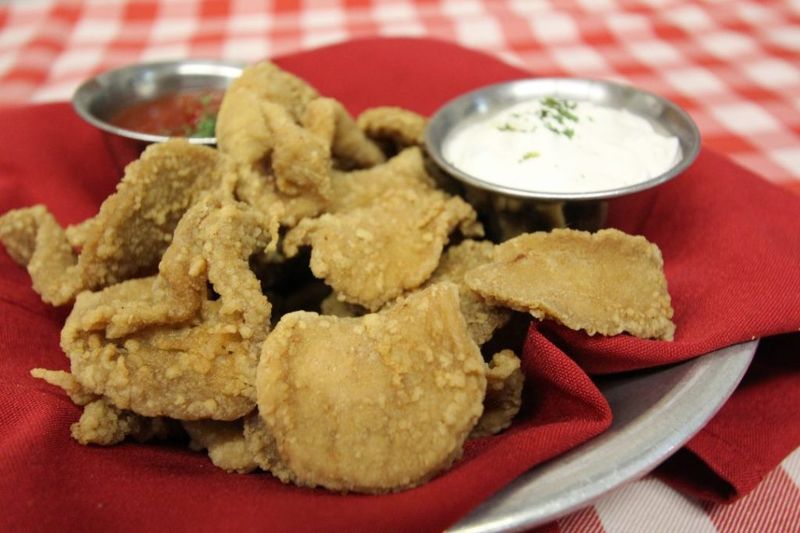
Despite their name, Rocky Mountain Oysters are not seafood. They are, in fact, deep-fried bull testicles, a delicacy in parts of Colorado and the American West.
Served as an appetizer, these ‘oysters’ boast a surprisingly mild flavor. However, the revelation of their true nature often deters many from trying them.
The dish is a symbol of Western culture’s ruggedness, often enjoyed at rodeos and ranches. Whether seen as a test of bravery or a culinary adventure, these oysters certainly make an impression.
Chitlins
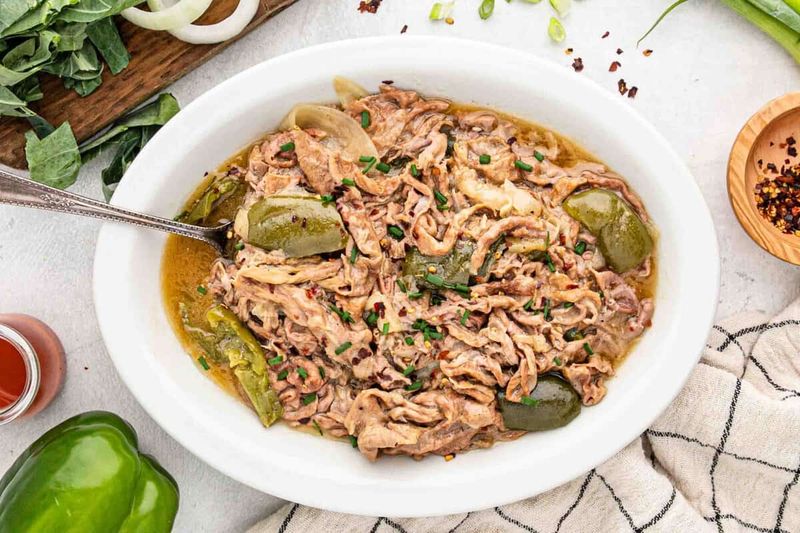
Chitlins, short for chitterlings, are pig intestines that have been cleaned, boiled, and often fried. A traditional Southern dish, it carries a strong, distinct odor that many find off-putting.
Despite this, chitlins are a cherished part of African American soul food. They are usually served during holidays and special occasions, often accompanied by hot sauce or vinegar.
Their preparation requires careful cleaning, which can be labor-intensive. The cultural significance of chitlins highlights resilience and community, even in the face of divisive opinions on taste.
Lutefisk
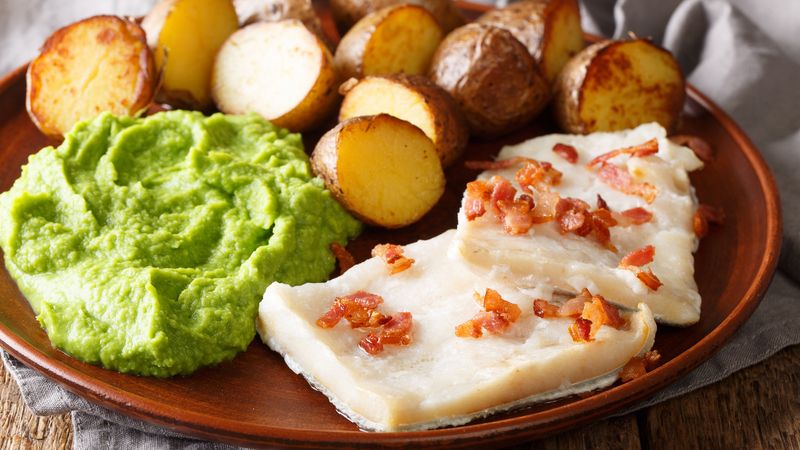
Lutefisk is a Nordic dish made from dried whitefish, typically cod, that has been soaked in lye. This method gives it a unique gelatinous texture and a strong odor that many find hard to stomach.
In the Upper Midwest, particularly Minnesota, lutefisk is a holiday tradition among Scandinavian-Americans. Despite its divisive nature, it represents cultural heritage and nostalgia for many families.
The dish is often served with potatoes and a rich cream sauce, attempting to balance its intense flavor. It remains a test of culinary courage for newcomers.
Hog Maw

Hog maw, also known as “pig’s stomach,” is a Pennsylvania Dutch dish filled with sausage, potatoes, and cabbage before being baked. Its name often sparks curiosity or concern.
The dish is a staple at celebrations, reflecting the frugality and ingenuity of the German immigrants who brought it to America.
While the idea of eating a stomach may deter some, others appreciate its hearty, comforting taste. Each bite is a tribute to a simpler era, where no part of the animal went to waste.
Head Cheese

Head cheese, despite its name, is not a cheese but a cold cut made from the head of a pig or calf. Seasoned and set in aspic, it presents a patchwork of flavors and textures.
This dish, found in delis across America, draws polarized opinions due to its unconventional ingredients.
For some, it’s a savory delight reminiscent of European charcuterie, while others find its appearance unappetizing. Historically, head cheese represents Old World traditions brought by immigrants seeking to preserve every edible part of livestock.
Pickled Pigs Feet
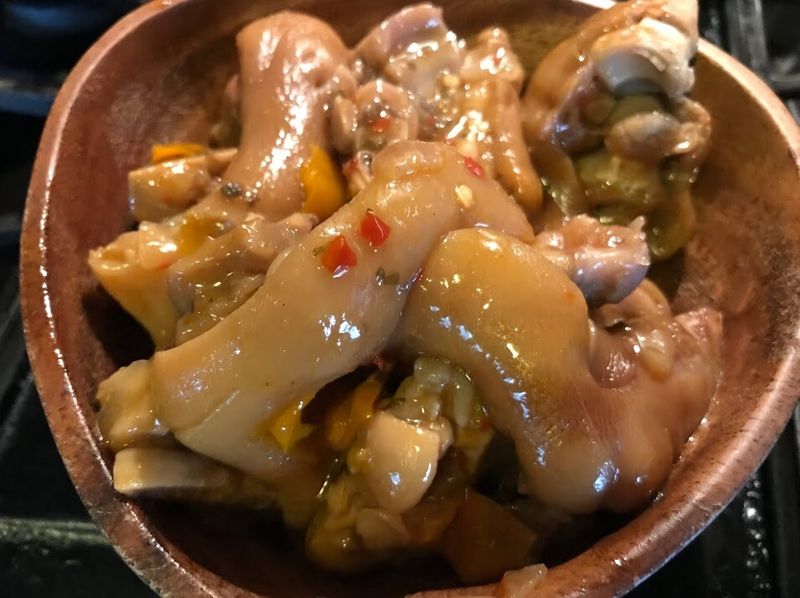
Pickled pigs feet are exactly what the name describes: pig’s feet cured in vinegar and spices. This Southern snack is as divisive as it is distinctive.
The texture is gelatinous, with a tangy flavor that can be an acquired taste. Loved by some for its nostalgic value, others find the idea and texture hard to digest.
Historically, it was a method to preserve meat without refrigeration. The dish reflects both a bygone necessity and the diversity of American culinary traditions.
Fried Rattlesnake

Fried rattlesnake is a dish that challenges even the most adventurous eaters. Found in the Southwestern United States, it has a flavor often compared to chicken with a hint of fish.
Served at festivals and novelty restaurants, it is both a curiosity and a regional delicacy.
While some appreciate the novelty and flavor, others are deterred by the idea of eating a snake. Its consumption is steeped in the frontier spirit, where settlers made use of whatever was available.
Spam Musubi

Spam musubi, a Hawaiian snack, combines slices of grilled Spam with rice, wrapped in seaweed. It’s a fusion of American and Asian cuisines, born out of necessity during World War II.
While popular in Hawaii, this dish is often met with skepticism elsewhere due to its use of Spam, a processed meat product.
For locals, it’s a beloved part of their culinary culture, symbolizing resilience and adaptation. Despite its simple appearance, Spam musubi offers a surprisingly satisfying taste experience.
Gizzard Stew
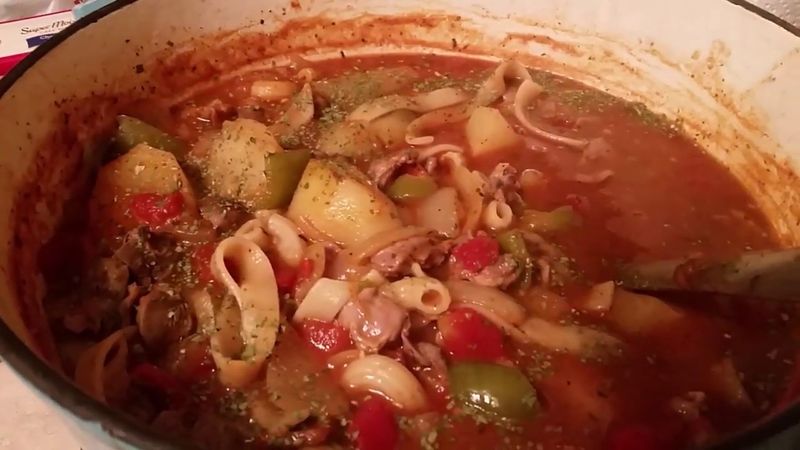
Gizzard stew features chicken gizzards simmered in a savory gravy. Popular in Southern kitchens, it offers a dense texture that can be off-putting to some.
The dish is a testament to the use of every part of the bird, delivering a hearty meal that satisfies on a budget.
While gizzards are an acquired taste, those who enjoy them savor the rich, meaty flavor. The dish’s history is rooted in frugality, making it a point of pride in the communities where it’s served.
Balut

Balut is a fertilized duck egg with a developing embryo, boiled and eaten from the shell. Popular in Filipino communities, it is a delicacy that many find challenging.
The experience of eating balut is sensory, with both visual and texture factors that can be daunting to first-timers. Despite its appearance, it offers a unique flavor profile that aficionados praise.
For those willing to try, balut is a cultural bridge to Southeast Asian traditions, often enjoyed with salt, chili, and vinegar.
Souse

Souse is a pickled meat dish typically made from pig feet, head, or ears, known for its tangy, vinegary flavor. Common in the Caribbean and African American communities, it elicits mixed reactions.
Served cold, souse is often enjoyed with crackers or bread. Its preparation involves marinating the meat in a seasoned broth, leading to a distinct taste.
For many, it is a nostalgic reminder of family gatherings and cultural heritage, while others find its texture and flavor less appealing.
Scrambled Eggs with Brains

Scrambled eggs with brains is a dish combining scrambled eggs and calf brains, offering a creamy texture. This breakfast dish is not for the faint-hearted.
Its origin lies in the frugal cooking of rural America, where nothing went to waste. While some appreciate the richness brains add to eggs, others are unable to get past the concept.
The dish reflects an era when resourcefulness was key, and every part of the animal was seen as valuable nourishment.
Frog Legs

Frog legs are considered a delicacy in various cuisines but remain controversial in the U.S. Known for their tender meat, they taste somewhat like chicken.
Often fried or sautéed, frog legs are served in upscale restaurants and adventurous home kitchens. The dish is met with curiosity by some and aversion by others due to the source.
Their consumption is tied to culinary traditions that celebrate diverse ingredients, emphasizing flavor over familiarity.
Liver and Onions

Liver and onions is a classic dish with a polarizing taste. The strong flavor of beef liver, combined with sweet onions, is loved by some and loathed by others.
This dish is often appreciated for its nutritional value, being rich in iron and vitamins. However, its distinctive taste and texture can be challenging for many palates.
Historically, liver was a staple in home cooking, reflecting a time when organ meats were common in American diets due to their affordability.
Haggis
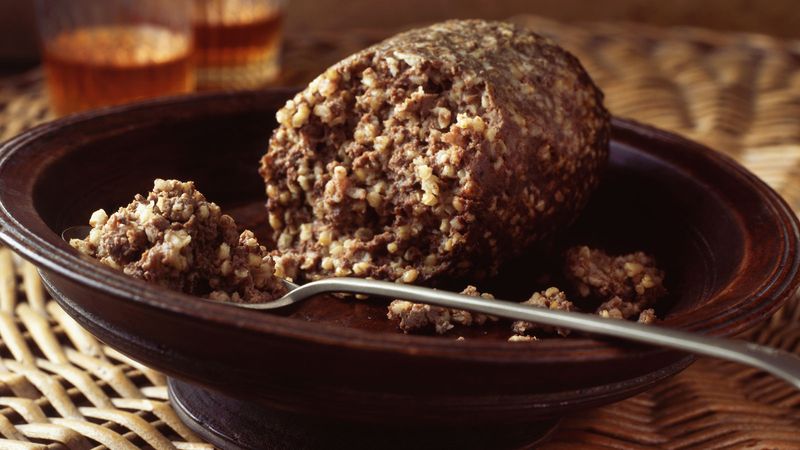
Haggis, the famed Scottish dish, consists of sheep’s heart, liver, and lungs, minced with oatmeal and spices, encased in the animal’s stomach. Though more popular in Scotland, it makes its way into some U.S. culinary circles during Burns Night celebrations.
The dish’s earthy taste and crumbly texture challenge many American diners. However, it stands as a cultural emblem for Scottish immigrants.
Haggis symbolizes a link to Scottish heritage, with its preparation and consumption steeped in tradition and ritual.
Cuy (Guinea Pig)
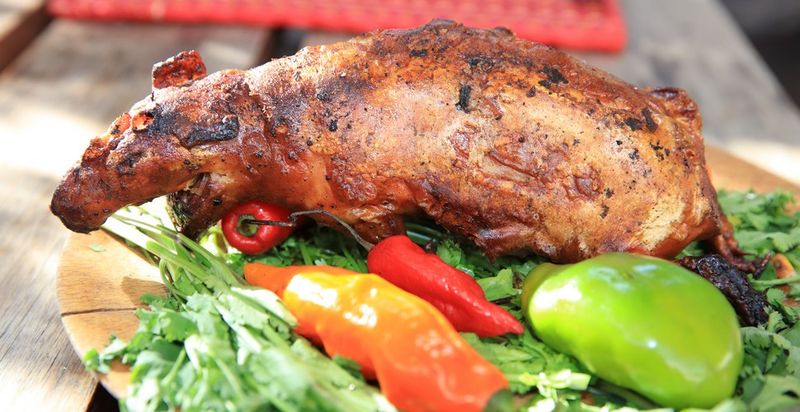
Cuy, or guinea pig, is a traditional dish in Andean cultures, now gaining some attention in the U.S. Its inclusion on menus as a novelty item often sparks debate.
Served roasted or fried, cuy is appreciated for its delicate, gamey flavor, akin to rabbit. Yet, many Americans find the concept of eating a pet unsettling.
Despite its controversial nature, cuy offers an insight into the culinary practices of indigenous South American cultures, celebrated in festivals and family gatherings.
Blood Sausage

Blood sausage, known as morcilla or black pudding in different cultures, is made from blood and fillers like rice or barley. Its dark color and unique flavor profile attract only the most adventurous eaters.
The sausage is often enjoyed grilled or fried, paired with hearty sides. In the U.S., it remains niche but holds a place in cultural festivals and specialty markets.
For those who relish it, blood sausage offers a rich, savory taste, deeply rooted in tradition and resourcefulness.
Menudo

Menudo is a traditional Mexican soup made with tripe and a red chili pepper base. While beloved by many Hispanic communities, its main ingredient deters some.
The soup is known for its robust flavor and is often considered a hangover cure. Served with lime and tortillas, it is a staple at family gatherings.
Despite its polarizing ingredient, menudo is a dish of celebration, reflecting the rich tapestry of Mexican culinary traditions embraced by many in the U.S.
Tripe

Tripe, the stomach lining of cows, is featured in dishes across many cultures, yet it remains an acquired taste in the U.S. The texture is chewy, which can be off-putting to some.
Often found in ethnic eateries, tripe is used in soups and stews. Those who appreciate it enjoy its ability to absorb flavors and its nutritional benefits.
Historically, tripe was a food of necessity, embodying the principle of using every part of an animal. It continues to be a curiosity for many.
Leave a comment